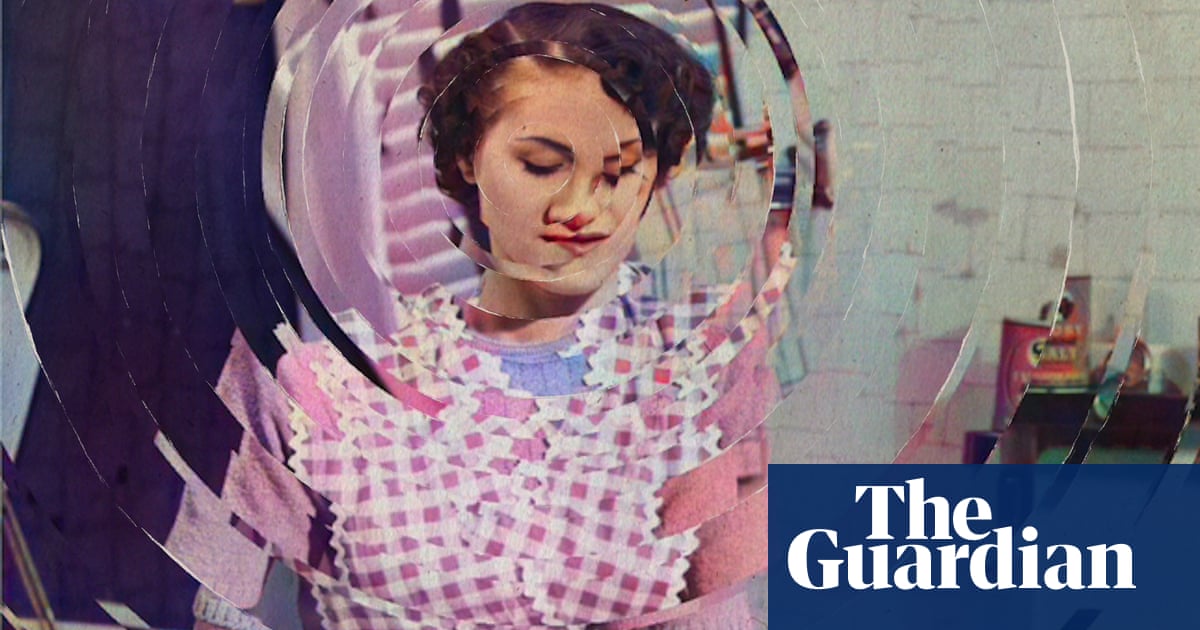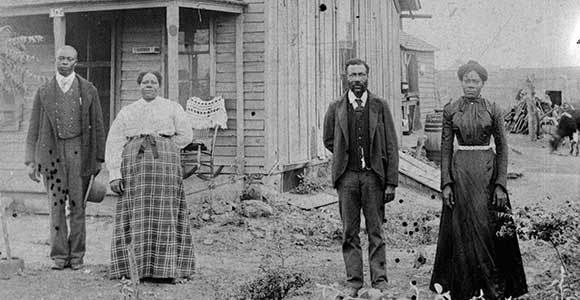
Sundresses and rugged self-sufficiency: ‘tradwives’ tout a conservative American past ... that didn’t exist
The aesthetic, which celebrates homesteading, milkmaids and ‘the feminine urge to take care of your husband’, hinges on a history today’s Republicans would fiercely oppose
Sundresses and rugged self-sufficiency: ‘tradwives’ tout a conservative American past ... that didn’t exist

Illustration: Kensuke Koike/The Guardian
The TikTok-friendly aesthetic, which celebrates homesteading, milkmaids and ‘the feminine urge to take care of your husband’, hinges on a history today’s Republicans would fiercely oppose
Carter Sherman
Wed 24 Jul 2024 09.00 EDTLast modified on Thu 25 Jul 2024 11.24 EDT
“Hey guys, and welcome back to my channel! Today, I’m going to be giving some tips for the ladies on how to attract a masculine man – a provider man,” the perky blonde woman tells the camera. Beaming and dressed in a pink dress complete with matching sweater, her swoop of blonde hair pinned back with a pearly headband, the woman rattles off her tips.
“You want to look feminine, you want to be fit and take care of yourself and you want to be friendly,” the twentysomething woman continues. “I feel like the most feminine women I’ve come into encounter with are very peaceful. So have a sense of peace about you. Be content in your life without a man and pray for the right one to come your way.”
She added: “You should be smiling a lot.”
Meet Estee Williams. With more than 100,000 followers on Instagram, another 200,000 on TikTok and a history of appearances on shows like Dr Phil and Piers Morgan, Williams is one of the most prominent faces of an internet phenomenon-slash-controversy: the traditional wife, or “tradwife”.
Tradwives first began trending online in 2020, when people were looking to wring excitement and comfort out of the smallest household tasks. Although there’s no single definition of “tradwife” – and many female influencers who’ve been decorated with the label don’t use it or even reject it – you know the tradwife when you see her. She is probably baking sourdough in an immaculate outfit, has a gaggle of kids (or wants them), and suggests – either silently or very loudly, like Williams – that life is better when women adhere to “traditional” gender roles and perfect at-home domesticity and nurturing.
With the selection of JD Vance as Donald Trump’s running mate, the values that undergird the tradwife lifestyle are taking center stage at the highest levels of politics. Vance has fashioned himself as a champion of the so-called nuclear family, disparaging “the sexual revolution” and divorce. Days after the US supreme court overturned Roe v Wade in 2022, Vance tweeted: “If your worldview tells you that it’s bad for women to become mothers but liberating for them to work 90 hours a week in a cubicle at the New York Times or Goldman Sachs, you’ve been had.”
He has also suggested that Kamala Harris, who is likely to become the Democratic nominee for president after Joe Biden ended his presidential campaign on Sunday, should not have political power because she does not have biological children.
“Why have we let the Democrat party become controlled by people who don’t have any children? And why is this just a normal fact of American life?” Vance asked during a 2021 Virginia talk. “That the leaders of our country should be people who don’t have a personal and direct stake in it via their own offspring, via their own children?” Harris has two step-children.
Vance’s own wife, Usha Vance, earned a law degree from Yale Law School as well as a master’s from Cambridge University. She clerked for Brett Kavanaugh before he joined the supreme court, and, up until JD Vance’s nomination for the vice-presidency, worked at a law firm that describes itself as “radically progressive”. Usha Vance resigned from the firm last week to focus on supporting her family.
Tradwives are trending – and Vance is rising – as the United States is being roiled by fights over gender rights, which are only set to intensify if Trump and Harris go head to head. American women are grappling with a backlash against abortion rights, their economic mobility and feminism itself. They are also dealing with the failure of US social programs to keep up with the rising cost of living or to provide meaningful support for working moms. As of 2023, the United States was one of only six countries on the planet – as well as the only rich country – not to offer any kind of national paid leave.
Tradwives portray a fundamentally conservative and individual solution to that societal failure: retreat not only into the home, but also into history. Using the iconography of an idealized past, they evoke the economic and emotional fantasy that families, and especially women, can opt out of the complexity of modern society. Wouldn’t it be nice if you could choose to live on one income? Wouldn’t it be nice if you could choose to stay home and raise children, rather than be forced into it because childcare is so damn expensive?
In reality, that past was only made possible through extensive government intervention – the kind to which modern Republicans are fiercely opposed.
A softer life
For the internet to dub you a tradwife, you typically have to be more than a homemaker. You must swathe yourself in an aesthetic that draws from a vast and varied array of historical reference points.
The account of Gwen the Milkmaid, a blonde who boasts about 70,000 TikTok followers and a backstory as a former OnlyFans worker turned God-fearing tradwife, lives at the center of a Venn diagram of common tradwife inspirations: the nuclear family of the 1950s, Little House on the Prairie, and a 19th-century belief in “separate spheres”, when men went out to Do Industry while women upheld a cult of domesticity. Gwen likes to frolic in sundresses, “homestead” in the Canadian suburbs, and glory in “the feminine urge to take care of your husband and make him food all the time”. (Gwen also throws in a distinctly modern set of pseudoscientific beliefs, like “the sun doesn’t cause cancer”.) Above all, tradwives like Gwen preach self-sufficiency.
But 19th-century homesteading, the source of so much inspiration for both tradwives and the GOP – was not a private endeavor undertaken by hardy men and their supportive wives. It was the result of the huge government subsidy program known as the Homestead Act. The 1950s, another conservative inspiration, were also shaped by government subsidies for housing and education – as well as a post-second world war movement to pressure women out of the workforce – that briefly made it economically possible for vast numbers of white American women to live as housewives. (These subsidies were nowhere near as available to people of color.)
The women of the 19th century and 1950s also lived without the right to birth control or, after they were invented, credit cards. (Gwen the Milkmaid is skeptical of the former.) Domestic violence was not taken seriously. Rape victims’ sexual history could be brought up in trials, while marital rape was not even a crime. There’s a reason that the 1963 publication of The Feminine Mystique, a book about the widespread unhappiness of white middle-class housewives – written by a white middle-class housewife – triggered the advent of second-wave feminism.

‘The tradwives misrepresent what they are doing as what everybody used to do.’ Photograph: Debrocke/ClassicStock
“None of these people would seriously want to go back to a period when a man had a right to rape his wife,” said Stephanie c00ntz, the author of six acclaimed books about the history of marriage and families, including her forthcoming book For Better and Worse: The Problematic Past and the Challenging Future of Marriage. Tradwives are nostalgic for the 1950s because, she said, “they’re looking back at a time when it was economically possible for a woman who didn’t want to work out of the home to stay home.”
The social and economic conditions that made the nuclear family structure so dominant in the 1950s were also exceedingly unique. Except for this post-war period, it has been far from traditional for US families to be made up of a breadwinner husband, a wife who stays home to do unpaid cooking and cleaning as well as 2.5 kids who get to enjoy an extended childhood.
“The tradwives misrepresent what they are doing as what everybody used to do,” c00ntz said.
Many so-called tradwives do openly work for money – often through home-based small businesses, influencing or a combination of the two, such as selling courses on how to be a stay-at-home influencer. Like all influencers, their product is their own lifestyle.









 Wifey is pregnant and at the gig right now. This ain’t the 60’s.
Wifey is pregnant and at the gig right now. This ain’t the 60’s.